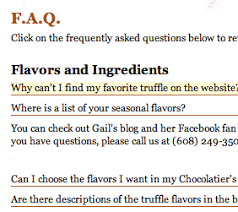
Understanding the Impact of “Display None” on SEO Performance
In the world of SEO, the use of “display: none” has been a topic of debate and discussion among digital marketers and website developers. This CSS property allows web developers to hide certain elements on a webpage from users while still keeping them visible to search engine crawlers. However, using “display: none” inappropriately can have implications for SEO performance.
When search engines crawl a webpage, they analyze the content to determine its relevance and ranking in search results. If important content is hidden using “display: none,” it can be seen as an attempt to manipulate search engine rankings, which goes against search engine guidelines.
While there are legitimate reasons to use “display: none” for user experience purposes, such as hiding dropdown menus or pop-up windows until they are needed, using it to hide keyword-stuffed text or links solely for SEO purposes can result in penalties from search engines.
Search engines are constantly evolving their algorithms to detect and penalize black hat SEO tactics, including hiding text or links with “display: none.” It’s essential for website owners and developers to prioritize user experience and transparency in their SEO strategies to avoid negative consequences.
Ultimately, the key to successful SEO is providing valuable and relevant content that is easily accessible to both users and search engines. By focusing on creating high-quality content and following best practices, websites can improve their visibility in search results without resorting to questionable tactics like using “display: none” for deceptive purposes.
Understanding the Impact of Hidden Text and ‘Display: None’ on SEO: Top 5 FAQs Answered
- Is hidden text bad for SEO?
- What does display none do?
- What are invisible words for SEO?
- Does visibility hidden affect SEO?
- Does Hidden Text affect SEO?
Is hidden text bad for SEO?
The practice of using hidden text, often achieved through techniques like “display: none” in CSS, raises concerns in the realm of SEO. While hiding text can be detrimental to SEO if done with the intent to manipulate search engine rankings by stuffing keywords or deceptive tactics, there are legitimate reasons for hiding text for user experience purposes. Search engines aim to provide users with relevant and valuable content, so any attempt to deceive or manipulate search rankings through hidden text may result in penalties. It is crucial for website owners and developers to prioritize transparency and user-centric design when considering the use of hidden text to ensure compliance with search engine guidelines and maintain a positive SEO performance.
What does display none do?
Display: none is a CSS property that allows web developers to hide elements on a webpage from users visually while still keeping them in the HTML structure. This can be useful for improving user experience by hiding certain content until it’s needed, such as dropdown menus or pop-up windows. However, using display: none solely for SEO purposes to manipulate search engine rankings by hiding keyword-stuffed text or links can lead to penalties from search engines. It’s important to use display: none judiciously and transparently to ensure both a positive user experience and compliance with SEO best practices.
What are invisible words for SEO?
In the realm of SEO, invisible words refer to text that is hidden from website visitors but still present in the code for search engine crawlers to read. This practice is often achieved through techniques like using white text on a white background, setting font size to 0, or employing CSS properties like “display: none.” While some may attempt to sneak in extra keywords or content through invisible text to boost their SEO rankings, search engines have become increasingly sophisticated in detecting such tactics and may penalize websites for engaging in deceptive practices. It is crucial for website owners and developers to prioritize transparency and user-focused content creation in their SEO strategies to ensure long-term success and avoid potential penalties.
Does visibility hidden affect SEO?
One frequently asked question in the realm of SEO is whether using “visibility: hidden” affects SEO. While “visibility: hidden” hides elements from users visually on a webpage, it does not impact SEO if the content remains accessible to search engine crawlers. Search engines can still index and analyze the hidden content, so long as it is not used deceptively to manipulate rankings. It’s important to use “visibility: hidden” judiciously and ensure that any hidden content serves a legitimate purpose for user experience rather than attempting to game the system for SEO gains.
Does Hidden Text affect SEO?
When it comes to SEO, the use of hidden text, often achieved through techniques like “display: none,” can have a significant impact on a website’s search engine rankings. Search engines like Google consider hidden text as an attempt to manipulate search results, which goes against their guidelines. While there are legitimate reasons for hiding text for user experience purposes, such as dropdown menus or pop-up windows, using hidden text to stuff keywords or manipulate rankings can result in penalties. It is crucial for website owners and developers to prioritize transparency and user experience in their SEO strategies to avoid negative repercussions and ensure long-term success in search engine optimization efforts.